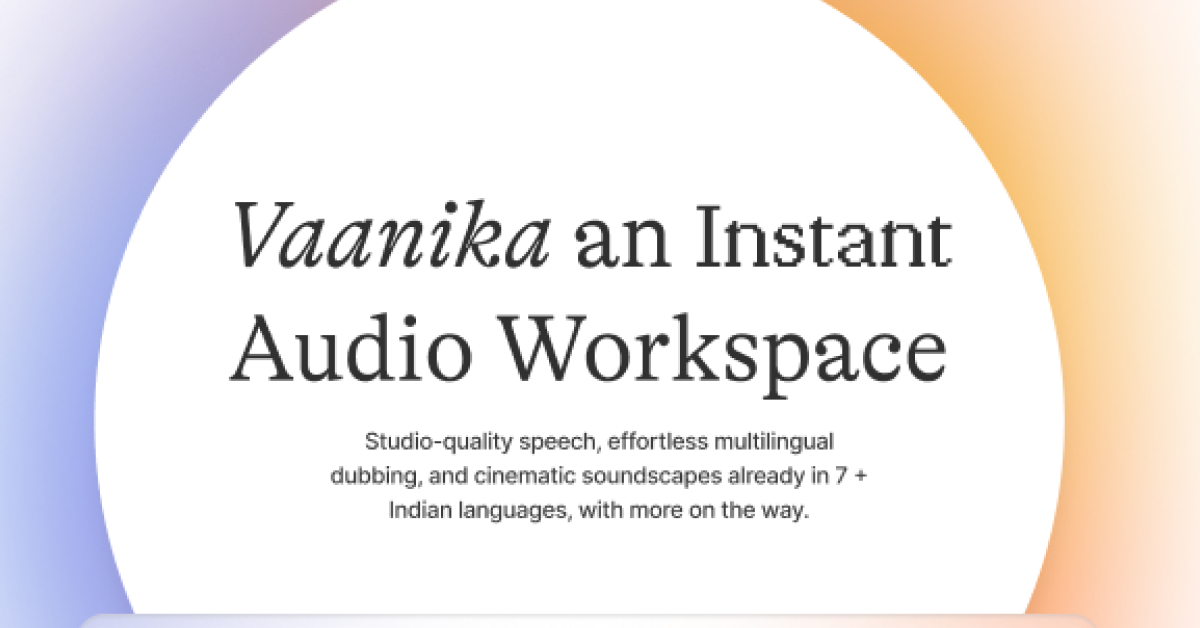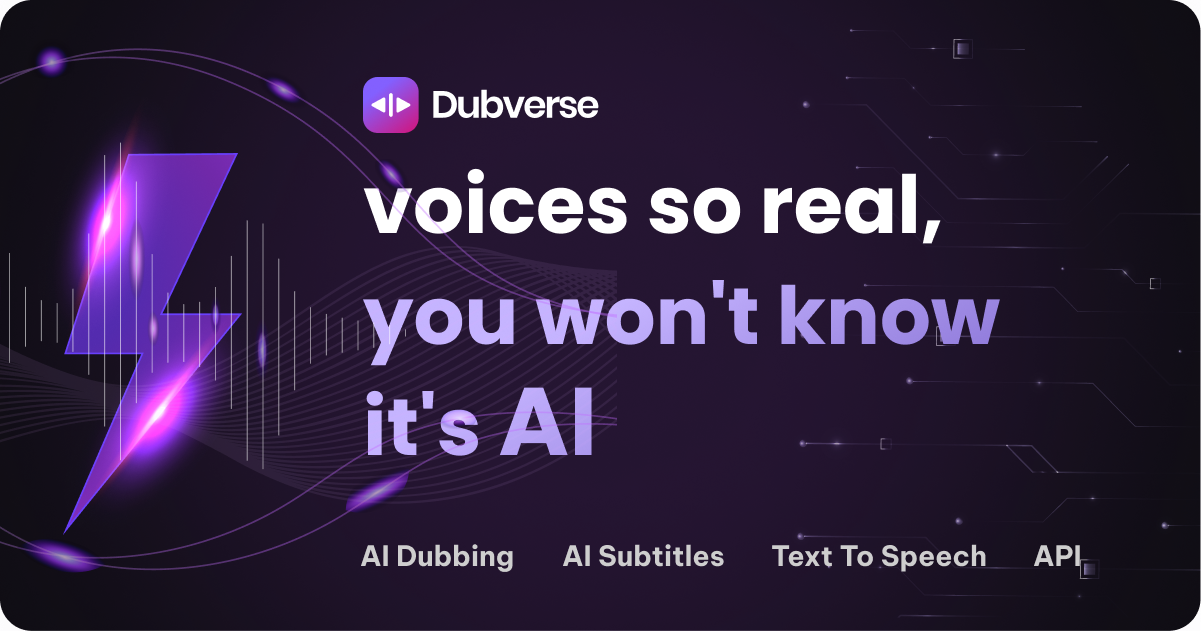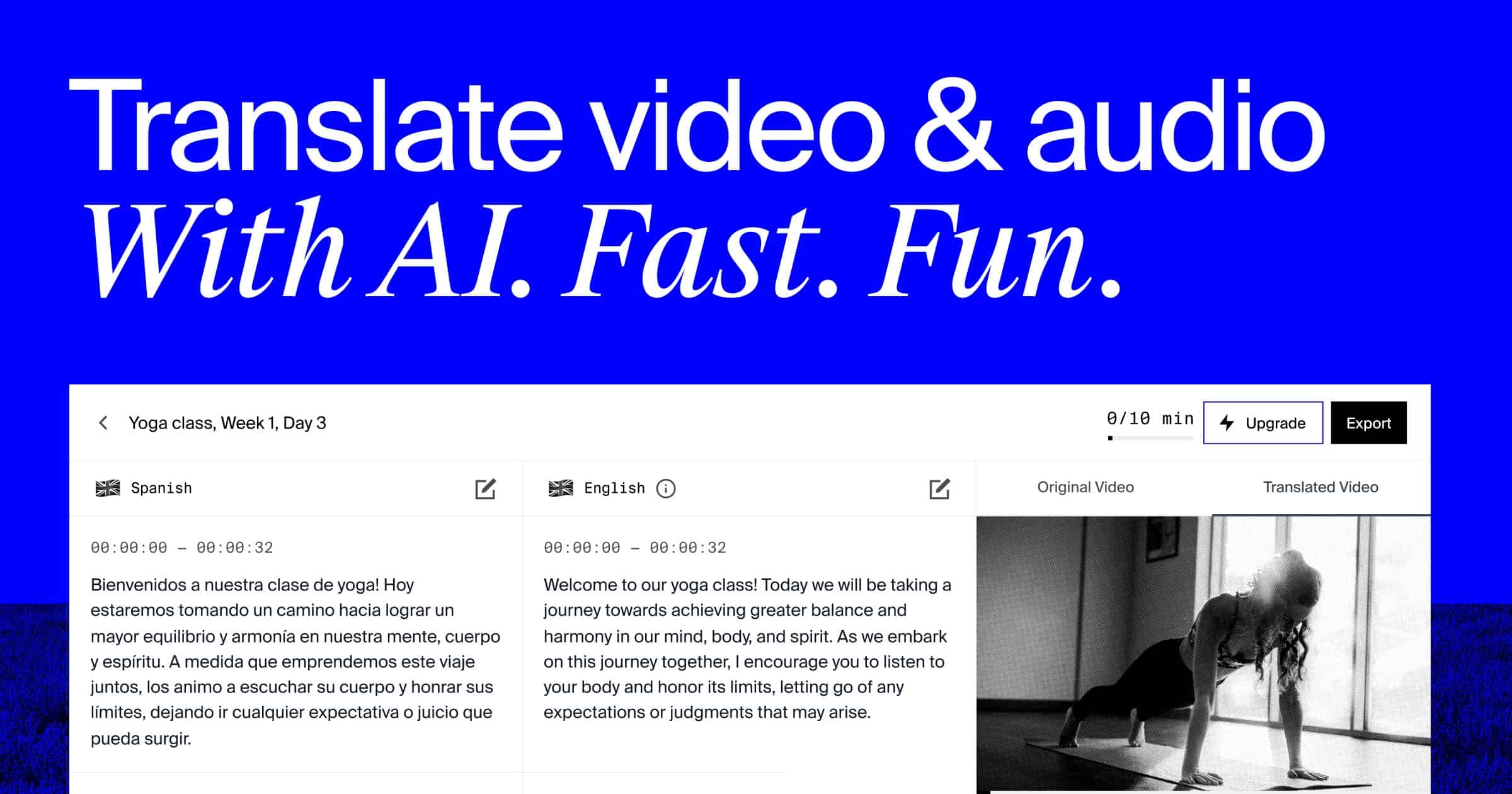For creators in India and worldwide, a common challenge is selecting the ideal platform or Text-to-Speech (TTS) tool to produce content in Indian languages with authentic Indic voices, thereby connecting with a diverse audience. The market is currently experiencing a boom in AI-powered tools that offer a wide range of functionalities, from hyper-realistic voice generation to seamless video localization, all while supporting an increasing number of Indian languages. However, discerning which platforms truly excel can be difficult.
This overview highlights the top 5 TTS platforms that Indian creators are increasingly utilizing. We will explore the reasons behind their popularity, the languages they support, and the quality of their voice output. It’s also worth noting that these platforms can be combined to create specific audio or video content, offering even greater flexibility for creators.
1) Vaanika: The Instant Audio Workscape for Indian Creators

Vaanika is rapidly emerging as a preferred platform for Indian creators, specifically designed to minimize the "creative friction" often encountered in digital content creation. My personal experience with Vaanika highlights its highly intuitive and streamlined workflow, which significantly boosts production speed and simplifies the entire process for creators. I particularly appreciate that I don't need to navigate through various settings or exert mental effort to figure out the next step within the interface. Additionally, the platform offers a generous number of credits in its free tier, which are consistently renewed, a feature I find very beneficial.
Creators are increasingly drawn to Vaanika for its ability to deliver professional-grade audio with a no-code, no-hassle approach. It proves exceptionally useful for rapid voiceovers in e-learning modules, hyper-personalized videos, and is particularly effective for marketing campaigns targeting Indic language audiences. Vaanika also includes a translation feature, and its translation quality is notably impressive compared to general tools like Google Translate, likely due to its current focus on Indic languages. This allows me, as a creator, to easily translate English scripts into seven Indic languages, greatly simplifying my workflow and eliminating the need to hire a separate translator.
Similar to ElevenLabs, Vaanika provides a voice library featuring over 70 distinct audio profiles with diverse personas and emotions. While it may not offer the same breadth as ElevenLabs, it is certainly robust enough for creators to begin their work. Although the platform currently lacks a specialized interface for audiobook production or a dedicated dubbing studio, it excels in rapid content creation. A 10-minute script can be transformed into a finished MP3 audio in under 90 seconds, making it ideal for creators focused on quick turnaround times. For longer audio content it might feel slow which restricts its use case for realtime conversational agents.
2) ElevenLabs: The Gold Standard

ElevenLabs has established a global benchmark for AI voice synthesis, renowned for generating voices that are not only realistic but also emotionally rich. It stands as a powerful tool for creators who require the highest fidelity in synthetic voices.
While ElevenLabs maintains a global focus, it does support a considerable number of Indic languages, including Hindi, Bengali, Gujarati, Kannada, Malayalam, and Marathi. On this platform, creators can adjust various settings, such as pitch and speed, to achieve their desired audio output. However, in comparison to Vaanika, ElevenLabs’ model occasionally makes pronunciation errors with certain specific words, which can make the content sound AI-generated. Consequently, users may need to generate the audio multiple times to obtain a satisfactory result.
ElevenLabs excels in the speed of its Text-to-Speech (TTS) conversion, enabling its API to be used effectively in real-time conversational agents. The platform also provides specialized interfaces for audiobook creation and dubbing. It’s important to note that their dubbing feature is not powered by voice cloning, and it supports only a limited number of Indic languages for this function. Personally, I find their generated output for Indic languages to be less impressive, although for global languages, the output is truly terrific. There is still significant work to be done for Indic languages.
A key advantage of ElevenLabs is its API for models, which allows businesses to integrate their TTS capabilities. Furthermore, they offer a highly diverse audio library. ElevenLabs particularly excels at capturing emotion; for instance, you can even discern laughter in the voice actor’s pauses.
The emotional depth in ElevenLabs voices is incredible, but for Indic languages, Vaanika delivers more authentic pronunciation and cultural nuances.— Content Creator, Educational Technology
3) HeyGen: Bringing Your Videos to Life with AI

HeyGen primarily functions as an AI video generation platform, skillfully integrating Text-to-Speech capabilities with AI avatars. While it has gained significant recognition for creating videos featuring realistic talking heads, its voice generation features are also surprisingly robust.
This platform stands apart in its ability to create personalized AI avatars, often referred to as “digital twins,” in various languages. However, when it comes to Indic languages, HeyGen can occasionally mispronounce words in the generated speech, which can sometimes lead to an undesirable output requiring manual adjustments. Furthermore, it’s important to note that HeyGen is not an audio-only platform; creating a voice clone or digital twin necessitates recording at least one minute of your video footage.
HeyGen is perfectly suited for creating explainer videos, a use case exemplified by popular YouTubers likeVarun Mayya, who utilize it for their YouTube Shorts. While its voice synthesis isn’t its strongest suit for audio-only content, creators can leverage voices generated from platforms like Vaanika or others and then seamlessly integrate them with videos on HeyGen for excellent lip-syncing. The overall quality is outstanding for professional video content, ensuring clear and impactful communication.
4) Rask AI: Global Localization, Simplified

Rask AI emerges as another strong contender in the AI video localization landscape, specifically focusing on dubbing, voice cloning, and text-to-speech for video content. Its core mission is to make global content universally accessible. It excels at providing natural-sounding translations that diligently preserve the original tone and context. Rask AI’s AI Voice Generator capabilities are particularly well-suited for social media content and podcasts, consistently delivering human-like voice quality. While I haven’t personally explored this platform extensively, it appears to be a valuable tool.
Conclusion
The Text-to-Speech software and AI-powered dubbing landscape in India is experiencing robust growth, with innovative platforms continually introducing unique features. While global leaders like ElevenLabs and HeyGen dominate their respective niches, Vaanika truly distinguishes itself as an immediate audio workspace. It offers an unparalleled focus on Indic languages, remarkable speed, and incredible ease of use. These attributes make it an exceptionally productive choice for Indian creators navigating the dynamic world of digital content.
Ultimately, the optimal choice hinges on your specific needs. Whether your priority is raw voice quality, extensive language support, seamless video integration, or sheer speed, evaluating these factors will guide you to the perfect AI tool for your content creation journey.

